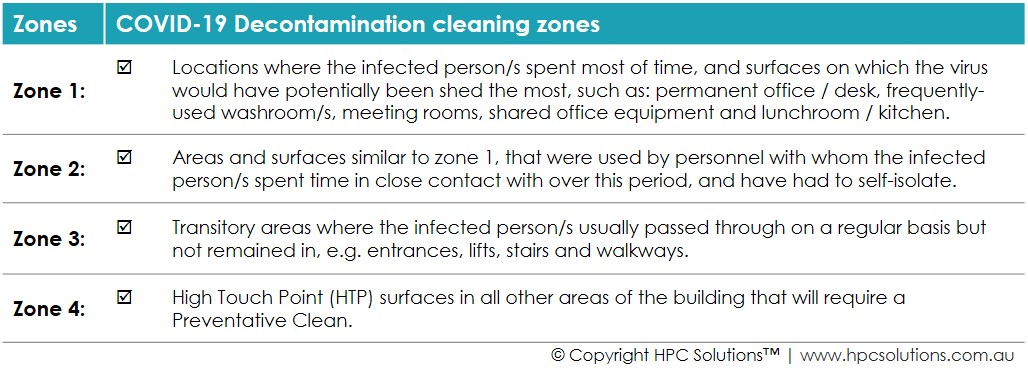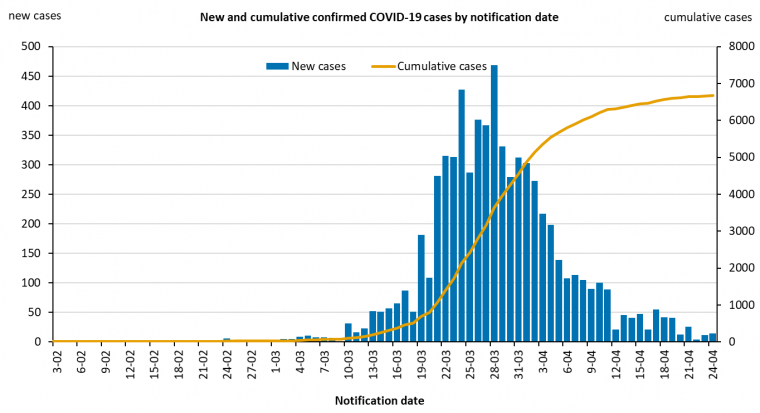If you are still not sure how to offer Preventative and Decontamination cleaning services for COVID-19, it’s not too late. You haven’t missed the boat.
Australia and New Zealand’s isolation restrictions seem to be working, which is fantastic news and we are very fortunate! But as restrictions start to ease, it would be a big mistake to think that we can go back to business as usual.
Far from it.
We don’t yet have a vaccine, we’re heading into winter, and the gains we’ve made could easily and quickly be lost unless we are smart about it.
So if you’re a cleaning company or facility manager, let’s remind everyone of how important cleaning properly is in the fight to prevent the spread of COVID-19 as schools and businesses start to return.
And no – that does NOT mean dousing your building in disinfectant every night!
It means strategically planning your services so that you can increase cleaning standards and frequencies according to the level of risk, and target your resources where they are most needed.
There is a huge difference between Preventative and Decontamination cleaning for COVID-19. This article gives you a quick overview but if you want to know about the additional services you should be offering or requesting, check out our Guide to Cleaning for COVID-19.
Strategic risk planning
The first question to ask is: has there been a confirmed case of coronavirus in the building or not?
- If yes, you need a Decontamination cleaning service (also called infectious cleaning)
- If no, you need a Preventative cleaning service.
Understanding how to plan and quote for these two approaches is important because the risks, processes, chemicals, equipment, methods, PPE, time, training and costs, are very different.
We highly recommend you consider purchasing our comprehensive Guide to Cleaning for COVID-19 if you plan to offer Decontamination and Preventative cleaning services during the coronavirus pandemic.
Let’s take a quick look at the key differences between these two services.

SOP – Cleaning & Disinfecting for COVID-19 by HPC Solutions
COVID-19 Prevention cleaning
Cleaning and disinfecting surfaces is an important way to prevent the spread of coronavirus in facilities that are being used for essential services, including health, aged and child care services.
As we open back up the country, this preventative approach now needs to be applied to all schools and businesses.
When planning a preventative service, we ask two key questions:
- Which surfaces have a higher risk of being contaminated by coronavirus, and
- Which surfaces have a higher risk of spreading coronavirus to other people.
Surfaces that are frequently touched by multiple hands are called high touch points (HTPs). The most critical HTPs to clean and disinfect, are those at most risk of being contaminated from the hands that touch them, such as in public areas and washrooms, or at risk of contaminating food, such as in kitchens.
Preventative cleaning needs to increase the frequency and effectiveness of cleaning and disinfecting methods on high touch points. In summary:
The aim of preventative cleaning is to:
- Clean HTPs frequently and diligently so as to;
- Remove the organic matter that germs live in on the surface; and
- Remove germs at the same time.
The aim of preventative disinfection is to:
- Disinfect HTPs frequently and correctly after cleaning; so as to
- Ensure that any viruses remaining on the surface are killed.
To ensure cross-contamination is prevented, it is important that sufficient quotas of cleaning cloths are provided and on or off-site laundering facilities installed at a minimum.
Enforce hand hygiene with training, disposable gloves, frequent washing and alcohol hand sanitiser.
Preventative cleaning shouldn’t be restricted to cleaning frequently touched surfaces. Consider offering additional hot water extraction carpet cleaning and measuring cleaning performance using ATP or UV Fluorescent Marking audits for complete peace of mind.
It is also extremely important that you don’t waste precious PPE and especially PPC on Preventative cleans. Leave them for healthcare workers who really need them and save them for the next wave of Decontamination cleans – if and when they come.

SOP – Coronavirus Decontamination Cleans by HPC Solutions
COVID-19 Decontamination cleaning
Following a confirmed case of coronavirus, you will be required to carry out a decontamination of the areas and rooms that have been potentially contaminated by the infected person.
We will call this the ‘Decontamination zone’. In fact, we divide the building into four Decontamination zones according to the level of risk as shown in the diagram below:

HPC Solutions recommends setting 4 Decontamination Cleaning Zones
In summary:
The aim of decontamination cleaning is to:
- Fully clean ALL hard surfaces in the decontamination zones.
- Disinfect ALL hard surfaces in the decontamination zones.
It is critically important that when carrying out a decontamination cleaning service:
- Cleaning and disinfecting products and practices are proven to be effective,
- The correct PPE* and PPC* is worn, and
- Cross-contamination between surfaces is prevented with disposable cleaning tools and strict hand hygiene.
When carrying out Decontamination cleans, be very sure that the methods you use for cleaning and disinfection are effective and evidence-based.
Poor cleaning practices can spread coronavirus around the building, or leave germs behind on surfaces, exposing building occupants to an even greater risk when they return.
Remember to share!
Click the icons below to share this article with your managers and supervisors for simple need-to-know information, and with your clients to show you are professional and a specialist in your field.
My next article will take a deeper look at the type of services you should be offer or requesting for COVID-19 Preventative cleaning, so why don’t you sign up to our newsletter to be the first to be notified.
Find out more
The Guide to Cleaning for COVID-19 pack contains five templates including two detailed Standard Operating Procedures (SOPs) for carrying out Preventative and Decontamination cleaning services, and High Touch Point (HTP) cleaning protocols:
- HTP Cleaning Protocol charts
- SOP – Cleaning and Disinfecting HTPs
- SOP – Coronavirus Decontamination Cleans
References:
- *PPE = Personal Protective Equipment and *PPC = Personal Protective Clothing
- Information about routine environmental cleaning and disinfection in the community, Australian Department of Health, Coronavirus (COVID-19)
- Environmental cleaning and disinfection principles for COVID-19. Australian Department of Health, Coronavirus (COVID-19)
- Cleaning and disinfecting to reduce COVID-19 transmission. Tips for non-healthcare settings, 20 March 2020, Department of Health and Human Services Victoria Government.

